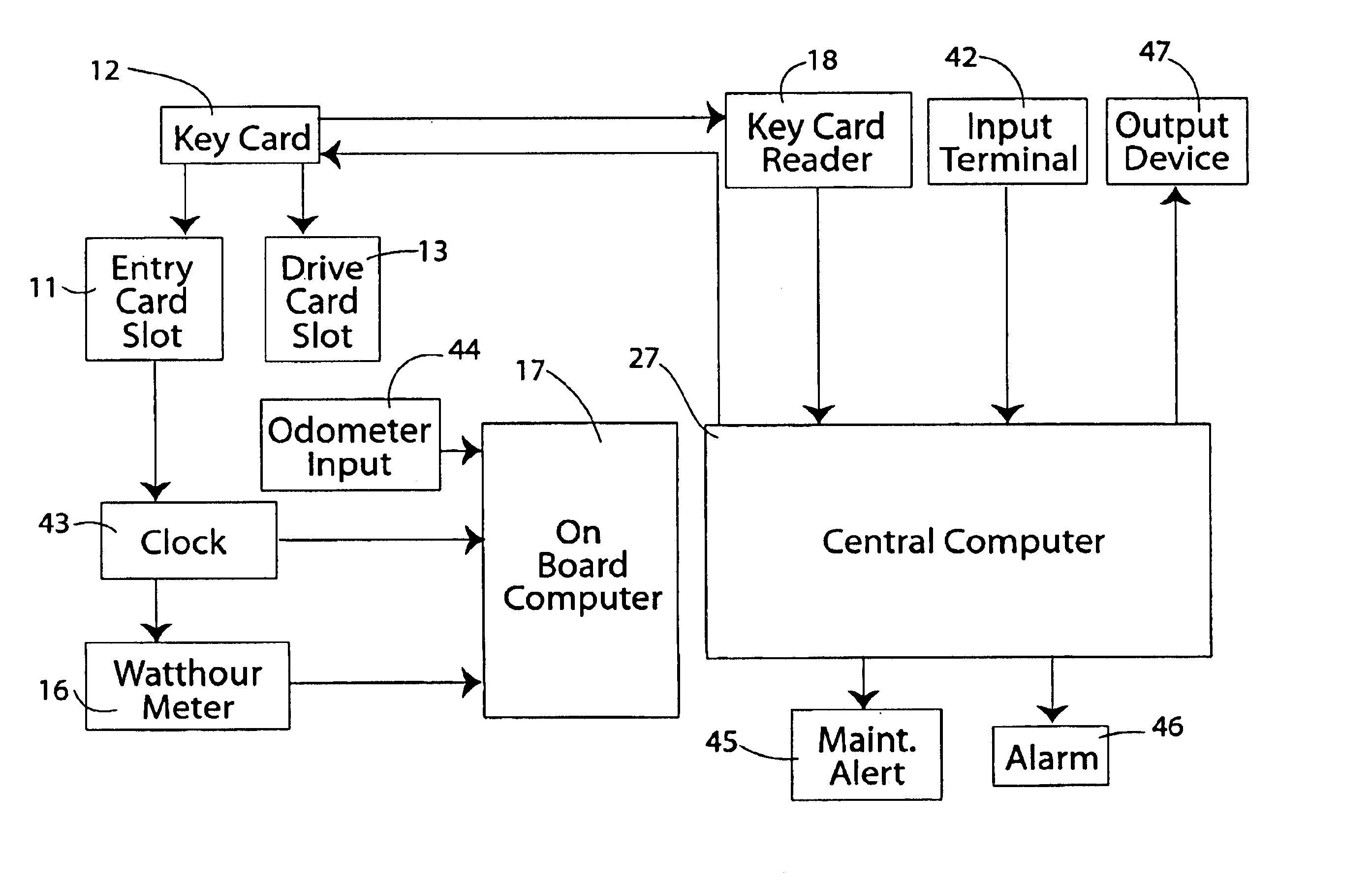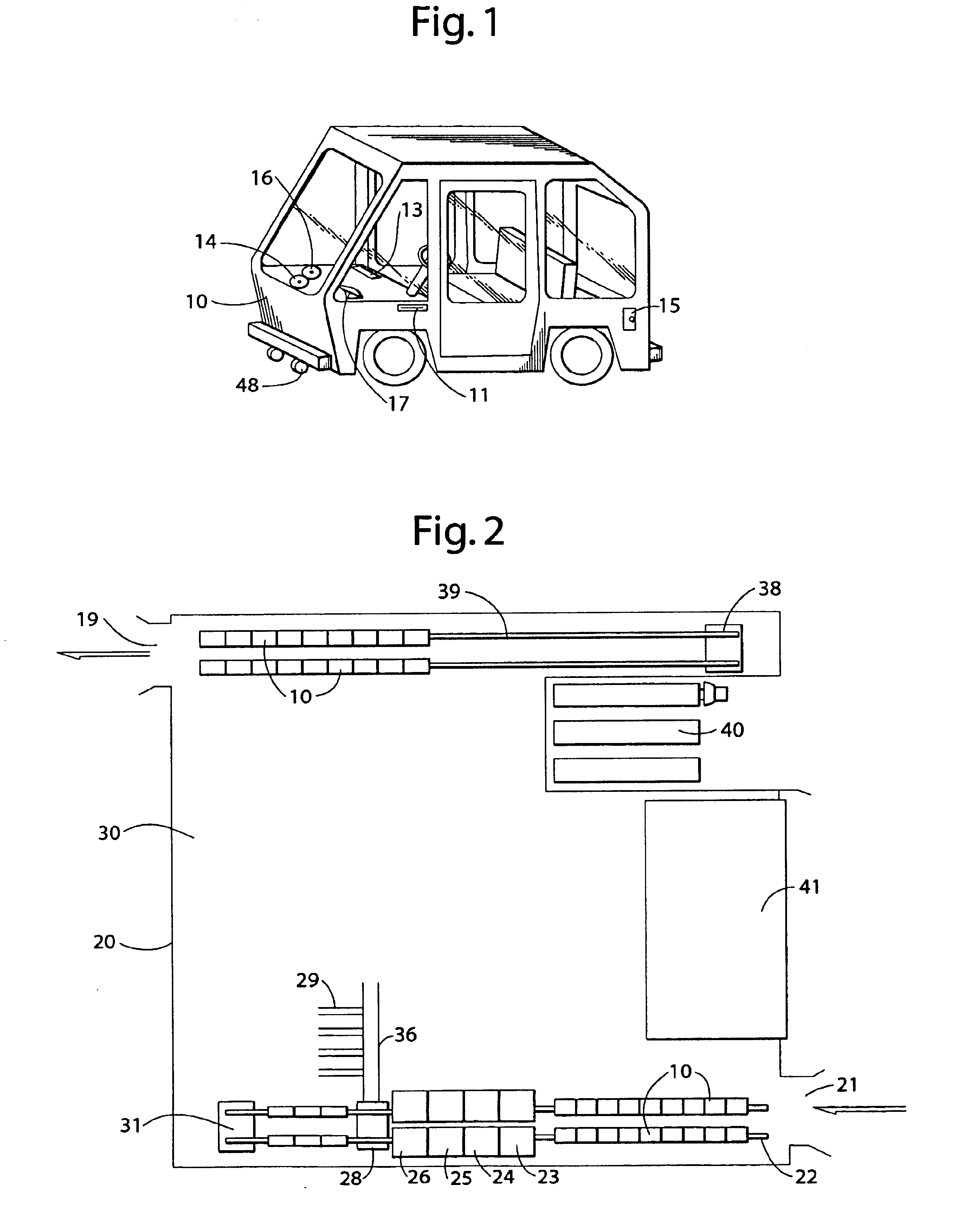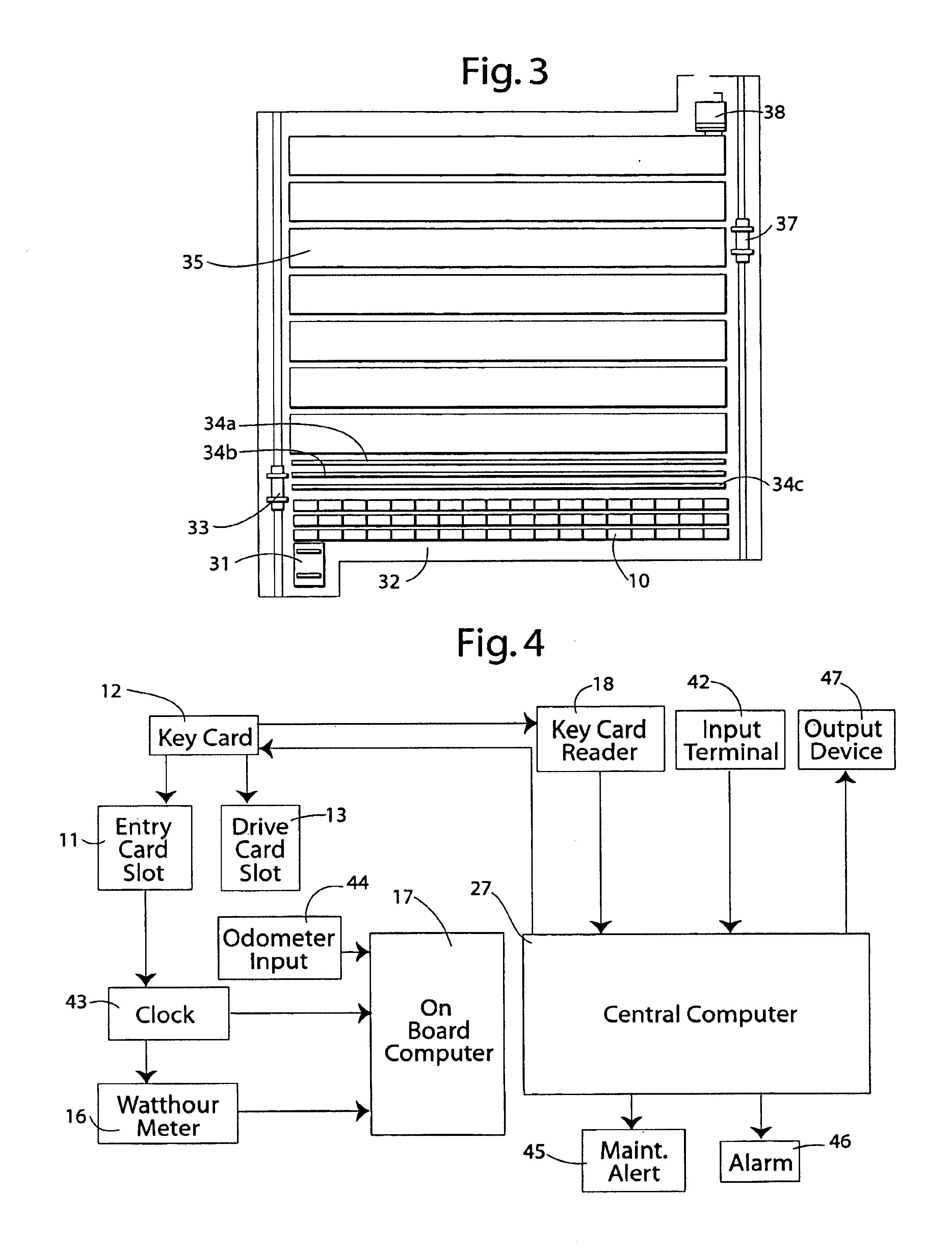Urban transportation system
a transportation system and urban technology, applied in the direction of electric devices, anti-theft devices, coupling device connections, etc., can solve the problems of reducing the quality of life of individuals, causing problems for the population, and users often spend a lot of time, so as to achieve low cost and efficient operation and storage, efficient and cost-effective
- Summary
- Abstract
- Description
- Claims
- Application Information
AI Technical Summary
Benefits of technology
Problems solved by technology
Method used
Image
Examples
Embodiment Construction
Referring now to the drawings, in which like reference numerals denote corresponding parts throughout the various views, the numeral 10 indicates an urban vehicle that is used for transporting the user of the vehicle, together with a passenger and packages, if any, to a desired destination. Each vehicle 10 that is used in the urban transportation system disclosed herein has the same general size and physical configuration as all of the others, except, possibly for some minor features and color of paint. This vehicle uniformity is the key to achieving maximum efficiency in operation of the system and to keeping the consumption of space for storing the vehicles, either in a storage facility or in on-street parking locations, to a minimum.
The present invention recognizes that an electric-powered urban vehicle will achieve an optimum in pollution control and significant efficiency in the system described. Therefore, portions of the disclosure relate specifically to an electric-powered u...
PUM
 Login to View More
Login to View More Abstract
Description
Claims
Application Information
 Login to View More
Login to View More - R&D
- Intellectual Property
- Life Sciences
- Materials
- Tech Scout
- Unparalleled Data Quality
- Higher Quality Content
- 60% Fewer Hallucinations
Browse by: Latest US Patents, China's latest patents, Technical Efficacy Thesaurus, Application Domain, Technology Topic, Popular Technical Reports.
© 2025 PatSnap. All rights reserved.Legal|Privacy policy|Modern Slavery Act Transparency Statement|Sitemap|About US| Contact US: help@patsnap.com



